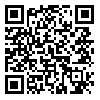Volume 28 - Supplementary
IBJ 2024, 28 - Supplementary: 398-398 |
Back to browse issues page
Download citation:
BibTeX | RIS | EndNote | Medlars | ProCite | Reference Manager | RefWorks
Send citation to:



BibTeX | RIS | EndNote | Medlars | ProCite | Reference Manager | RefWorks
Send citation to:
Sohrabi M S, Rezaei A, Mohammadi T, Shabani M. Influence of the Spectral Effect of the Dominant Hand-on Grip Strength and Hand Dexterity. IBJ 2024; 28 :398-398
URL: http://ibj.pasteur.ac.ir/article-1-4835-en.html
URL: http://ibj.pasteur.ac.ir/article-1-4835-en.html
Abstract:
Introduction: In all societies, tools and equipment are generally designed for right-handed individuals, who represent approximately 90% of the population of each society. However, left-handed and ambidextrous individuals (those who use both their hands to perform manual activities) also exist and are even engaged in delicate and sensitive work. This research aimed to investigate the relationship between the effect of the dominant hand and grip strength and hand agility in 2024.
Methods and Materials: A cross-sectional study was conducted on 182 adult participants (56% female and 44% male) to measure grip and pinch strength. The Edinburgh handedness questionnaire determined the hand-dominant category of participants. Additionally, the agility of both hands was quantified using the pegboard 32020A tool.
Results: There were significant differences in grip strength, pinch strength, and agility for both hands between men and women. Men exhibited greater grip strength and agility than women. However, gender had no significant effect on assembly agility. The effect of the dominant hand was also confirmed by the grip strength of both hands, the pinch strength of the left hand, and the agility of the right hand. Ambidextrous individuals are more agile in both hands and assembly activities.
Conclusion and Discussion: The findings of this study are another proof of gender differences in grip strength and agility. Gender should be taken into account when designing tools for use.

Methods and Materials: A cross-sectional study was conducted on 182 adult participants (56% female and 44% male) to measure grip and pinch strength. The Edinburgh handedness questionnaire determined the hand-dominant category of participants. Additionally, the agility of both hands was quantified using the pegboard 32020A tool.
Results: There were significant differences in grip strength, pinch strength, and agility for both hands between men and women. Men exhibited greater grip strength and agility than women. However, gender had no significant effect on assembly agility. The effect of the dominant hand was also confirmed by the grip strength of both hands, the pinch strength of the left hand, and the agility of the right hand. Ambidextrous individuals are more agile in both hands and assembly activities.
Conclusion and Discussion: The findings of this study are another proof of gender differences in grip strength and agility. Gender should be taken into account when designing tools for use.

| Rights and permissions | |
 |
This work is licensed under a Creative Commons Attribution-NonCommercial 4.0 International License. |







.png)
